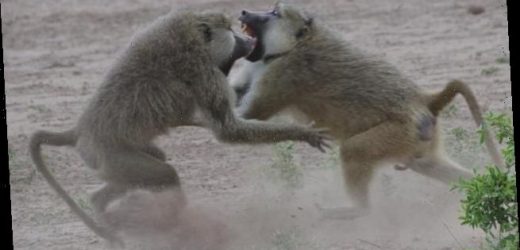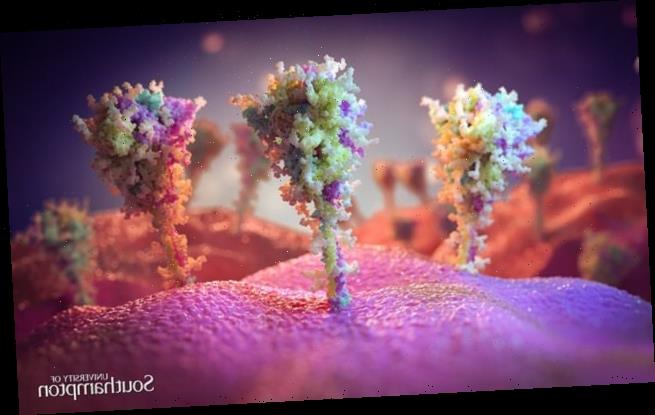Competing for dominance speeds up AGING in baboons: Males at the top age faster as a result of constantly having to defend their higher status, study finds
- Researchers measured the effects of aging on the DNA of 245 baboons in Kenya
- They found that baboons prematurely aged as they moved up the social ladder
- The team attribute this to the physical demands of fighting for dominance
It’s tough at the top. It turns out that’s especially true for dominant male baboons, who age faster due to having to constantly defend their high status, a study found.
Researchers in the US measured the impact of aging on the DNA of 245 wild baboons from a well-studied population in Kenya’s Amboseli National Park.
They found that the physiological impacts of achieving —and keeping — a top rank contributed more to premature aging than hardship in early life.
It’s tough at the top. That’s especially true for dominant male baboons, who age faster due to having to constantly defend their high status, a study found. Pictured: baboons battle
‘Environmental stressors can make the clock tick faster,’ said paper author and evolutionary anthropologist Jordan Anderson of Duke University in North Carolina.
This, he added, means that ‘some individuals appear biologically older than their actual age and experience a higher risk of age-related disease.’
‘We sought to answer what social or early life experiences contribute to accelerated aging in baboons.’
One way to measure aging and detect when such has occurred prematurely involves looking at the so-called ‘epigenetic clock’, chemical changes that affect DNA.
Comparing this with other methods, the researchers found that the epigenetic clock was a good predictor of chronological age overall when used on the baboons.
However — contrary to their expectations — the team found that adversity early in life was a poor predictor of accelerated aging among the wild monkeys.
Instead, they found that the epigenetic clock appeared to speed up as baboons climbed the social ladder and slowed down if they descended it — an effect they attributed to the physical demands of maintaining high status.
Similarly, the team also noted an association between baboons having a higher body mass index — and, by extension, more lean muscle mass — and accelerated aging, which they also link to the exertions required to fight off contenders.
The team found that the epigenetic clock appeared to speed up as baboons climbed the social ladder and slowed down if they descended it — an effect they attributed to the physical demands of maintaining high status. Pictured: two baboons fight for dominance
‘Our results argue that achieving high rank for male baboons — the best predictor of reproductive success in these animals – imposes costs that are consistent with a “live fast, die young,” life history strategy,’ said paper author Rachel Johnston.
‘While the findings reveal how social pressures can influence aging for males, we don’t see the same effect of rank in female baboons,’ said fellow author Jenny Tung.
Female baboons, she explained, ‘are born into their social rank rather than having to fight for it.’
‘Our results have important implications for research on the social determinants of health in humans and other animals because they show that ‘high status’ can mean very different things in different contexts,’ added Professor Tung.
‘They also highlight the importance of examining the effects of both early life and current life environments on biological aging,’ she concluded.
The full findings of the study were published in the journal eLife.
Researchers in the US measured the impact of aging on the DNA of 245 wild baboons from a well-studied population in Kenya’s Amboseli National Park
WHY ARE NON-HUMAN PRIMATE NUMBERS DECLINING?
Behind the collapse in numbers is an increase in industrial agriculture, large-scale cattle ranching, logging, oil and gas drilling, mining, dam building and road construction.
The illegal trade in bushmeat – killing apes and monkeys for their flesh – is also decimating the animals, as is changing climates and diseases spread from humans to apes.
Growing trees to produce palm oil – used in many popular foods – is a particular threat to primates in Indonesia, as is mining for gold and sapphires in Madagascar.
With many species living in rainforests, the cutting down of millions of acres of forest to supply the increasing demand for timber or to clear land for agriculture is destroying their habitat and making populations more fragmented.
Source: Read Full Article





